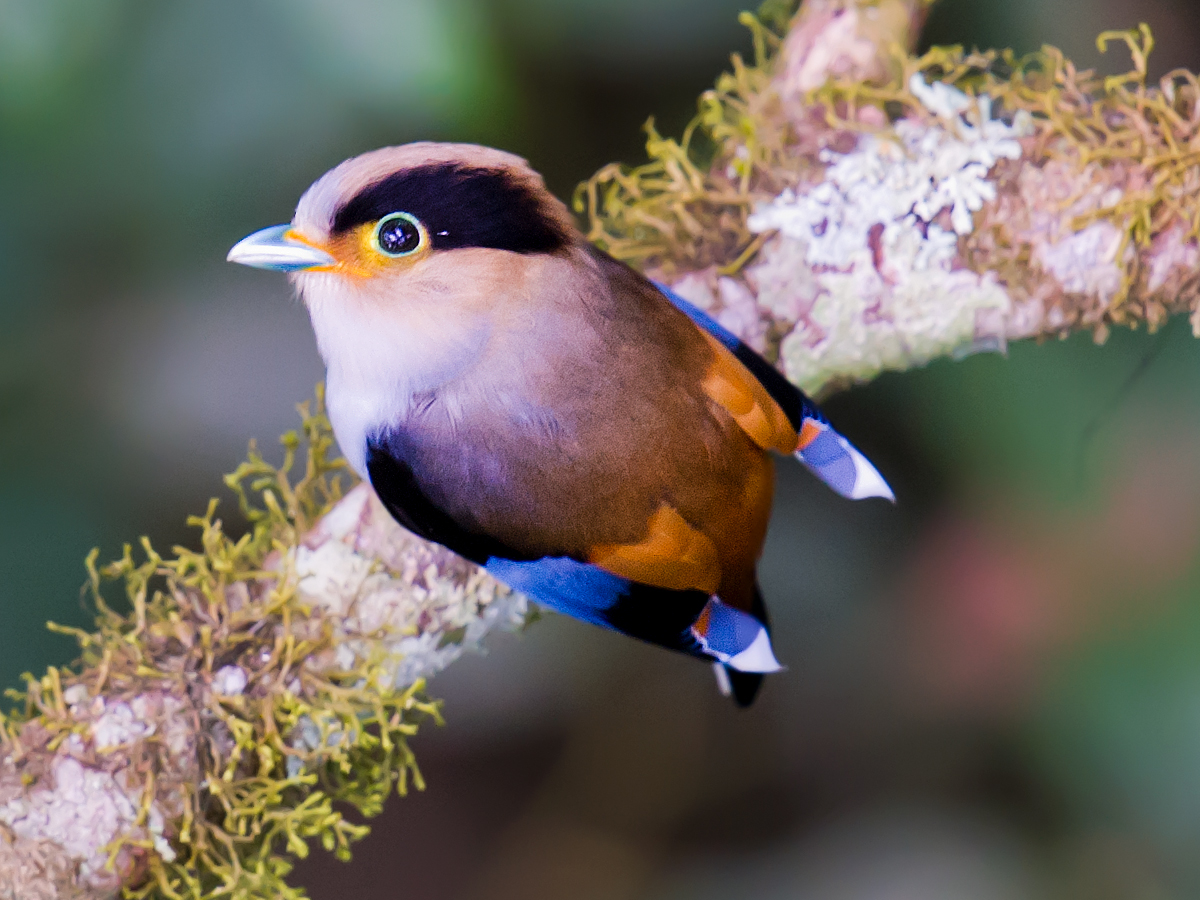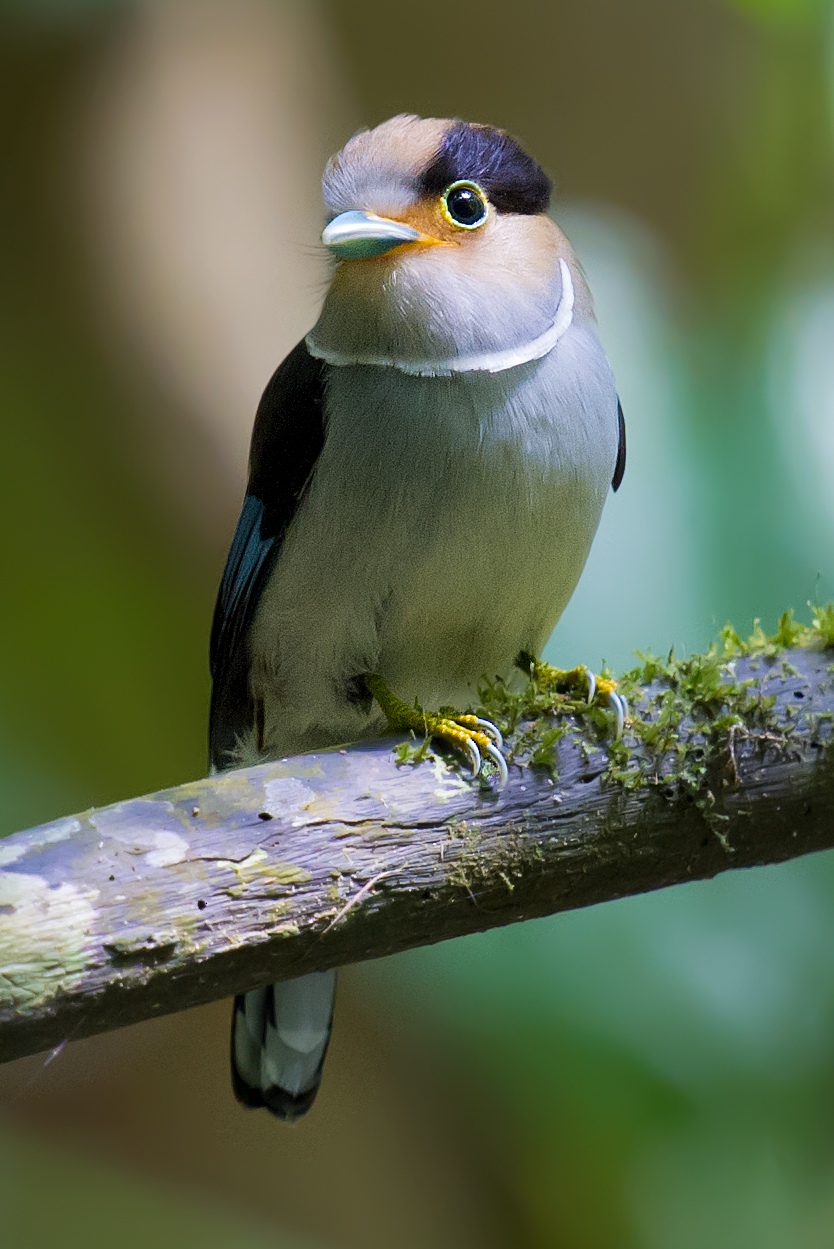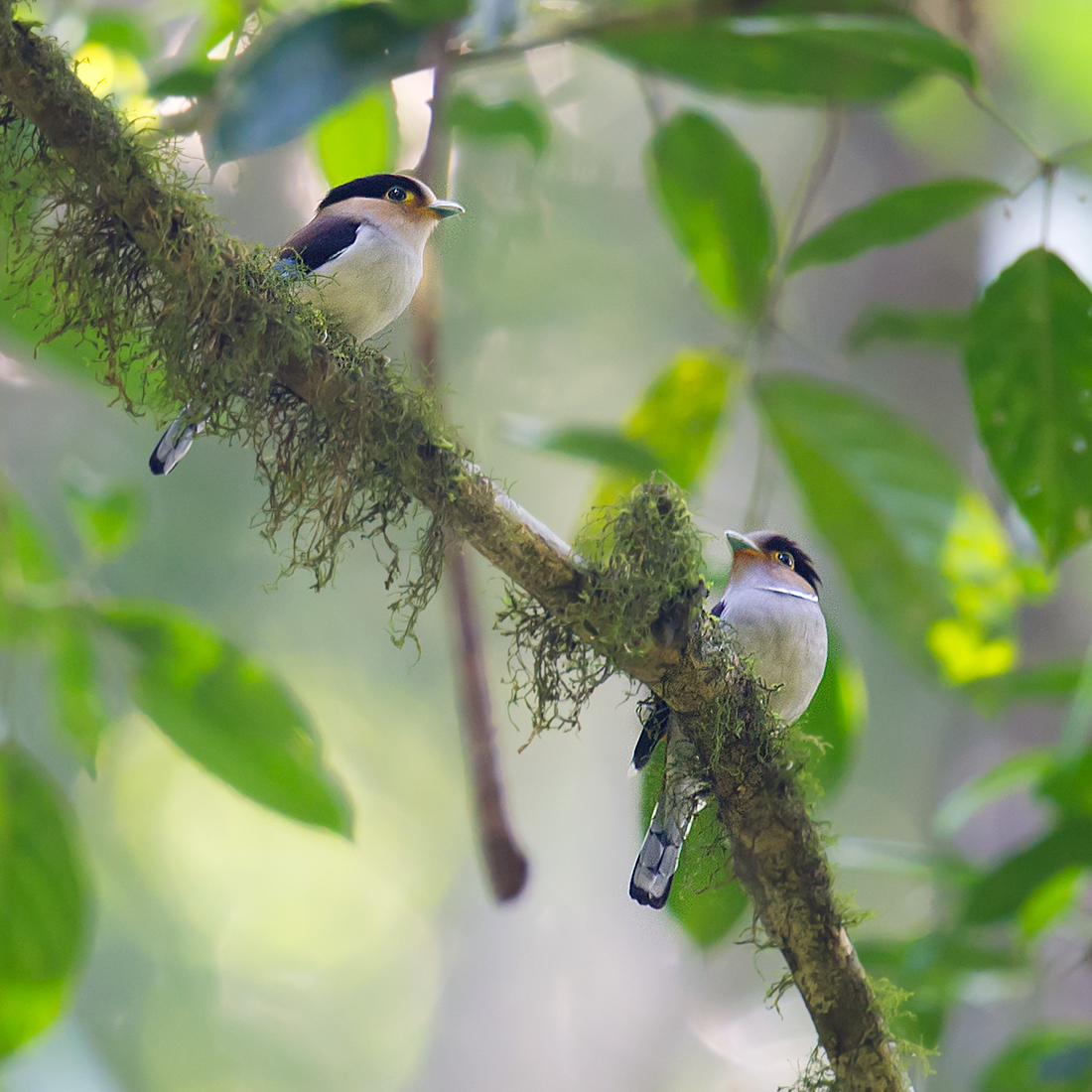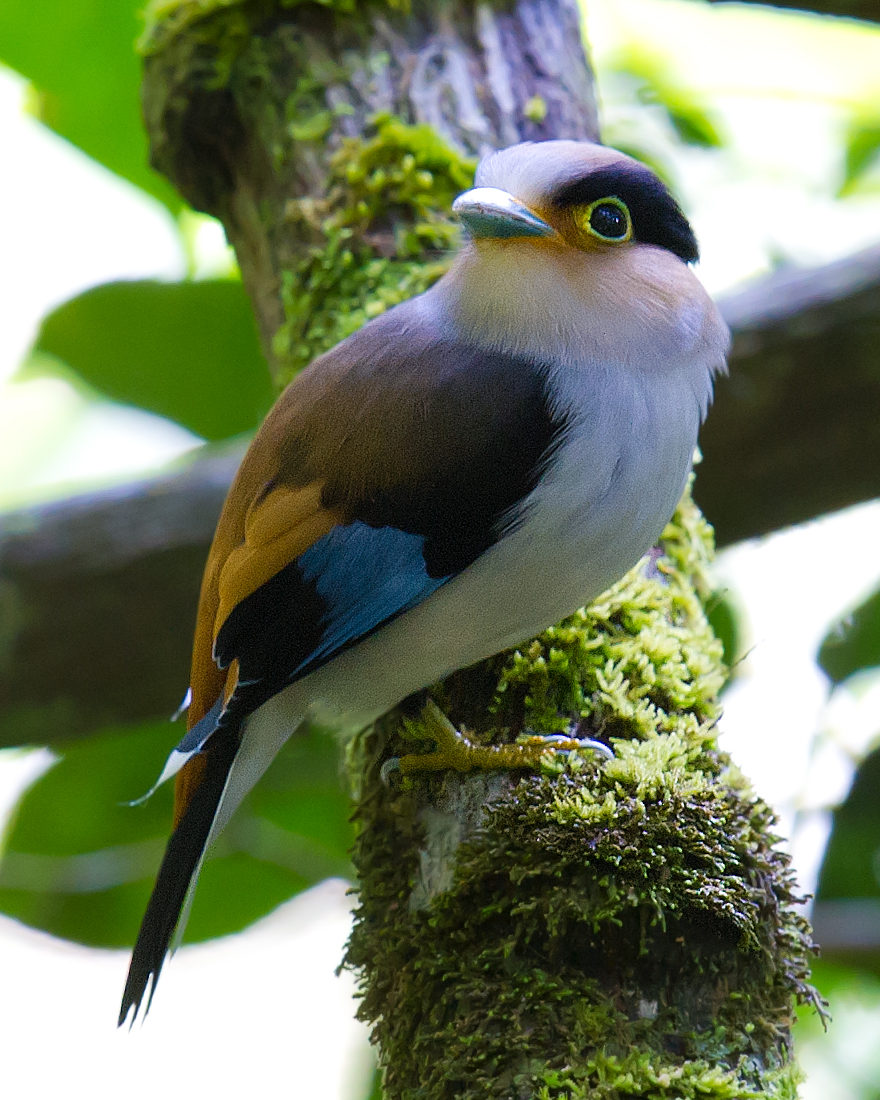



Silver-breasted Broadbill Serilophus lunatus elisabethae is uncommon resident southwest and southeast Yunnan and southwest Guangxi; polionotus is endemic to Hainan; and Grey-lored Broadbill S. rubropygius resident southeast Tibet. HABITAT & BEHAVIOR Lowland forests, to 800 m (2,630 ft.). Frequents middle story and sub-canopy in search of insects, the bulk of its diet. Shy. Often in pairs, small groups, and mixed-species flocks. ID & COMPARISON Small and stocky, toy-like, with broad black supercilium on mainly greyish head and yellow wash on lores, greyer on rubropygius. Mantle brown; rump, tertials, and uppertail coverts chestnut. Wings mostly black with blue flash and white tip. Tail black with outer tail feathers white; largely white from beneath. Underparts greyish white. Female slightly greyer; has narrow white necklace. Eye-ring yellow. BARE PARTS Bill light blue, yellow at base; feet yellow. VOICE Piercing, two-note whistle. — Craig Brelsford
THE TYPICAL BROADBILLS OF CHINA
shanghaibirding.com covers all species in the family Eurylaimidae in China:
Long-tailed Broadbill Psarisomus dalhousiae
Grey-lored Broadbill Serilophus rubropygius
Silver-breasted Broadbill S. lunatus
ACKNOWLEDGEMENTS
Daniel Bengtsson served as chief ornithological consultant for Craig Brelsford’s Photographic Field Guide to the Birds of China, from which this species description is drawn.
